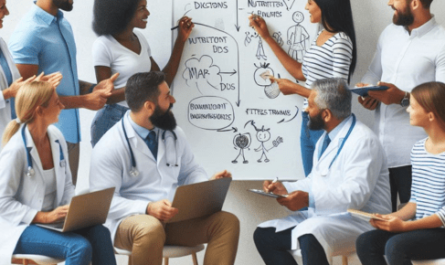
A stroke can be a life-altering event, often resulting in significant physical and cognitive challenges. Recovery after a stroke requires a comprehensive approach that includes rehabilitation to regain lost functions and improve overall quality of life. This article explores how stroke rehabilitation enhances recovery and the various benefits it offers to individuals post-stroke.
Understanding Stroke and Its Impact
A stroke occurs when blood flow to the brain is interrupted, either due to a blockage (ischemic stroke) or a burst blood vessel (hemorrhagic stroke). This disruption can lead to brain damage and a range of disabilities, including:
- Weakness or paralysis on one side of the body
- Difficulty speaking or understanding language
- Impaired coordination and balance
- Cognitive deficits, such as memory loss or difficulty with problem-solving
The extent of these impairments can vary widely among individuals, making rehabilitation an essential component of recovery.
The Role of Rehabilitation in Stroke Recovery1. Personalized Rehabilitation Programs
One of the key aspects of stroke rehabilitation is the development of personalized rehabilitation programs tailored to each individual’s needs and goals. After a thorough assessment by a team of healthcare professionals, including physiatrists, physiotherapists, occupational therapists, and speech therapists, a comprehensive treatment plan is created.
These programs often include a combination of physical, occupational, and speech therapy, focusing on the specific impairments experienced by the stroke survivor. By addressing individual challenges, rehabilitation helps optimize recovery and improve functional abilities.
2. Improvement of Physical Function
Stroke rehabilitation primarily focuses on enhancing physical function. Physiotherapists employ various techniques and exercises to help individuals regain strength, flexibility, and coordination. Key interventions may include:
- Strengthening Exercises: Targeted exercises to rebuild muscle strength, particularly in affected limbs.
- Balance Training: Activities designed to improve stability and coordination, reducing the risk of falls.
- Gait Training: Practicing walking using assistive devices, gradually transitioning to independent mobility.
These physical rehabilitation strategies not only aid in regaining lost functions but also promote overall physical health, which is crucial for long-term recovery.
3. Enhancing Daily Living Skills
Occupational therapy is another critical component of stroke rehabilitation. Occupational therapists focus on helping individuals regain the skills needed for daily living activities, such as dressing, grooming, cooking, and managing personal care.
Therapists often use adaptive strategies and assistive devices to enable stroke survivors to perform these tasks independently. By promoting self-sufficiency in daily activities, rehabilitation enhances confidence and encourages individuals to engage in their routines, leading to improved quality of life.
4. Support for Communication
Many stroke survivors experience communication difficulties, including aphasia (difficulty with speaking or understanding language) or dysarthria (slurred speech). Speech and language therapy plays a vital role in addressing these challenges.
Speech therapists work with individuals to improve their communication skills through targeted exercises, practice, and the use of alternative communication methods when necessary. Effective communication is essential for social interaction and emotional well-being, making this aspect of rehabilitation crucial for enhancing overall quality of life.
5. Psychological and Emotional Support
Rehabilitation after a stroke also involves addressing the psychological and emotional aspects of recovery. Many individuals experience feelings of frustration, depression, or anxiety as they navigate their rehabilitation journey. Mental health support is essential in promoting emotional well-being.
Counseling, support groups, and therapy sessions can help individuals process their experiences and build coping strategies. Engaging in group therapy allows stroke survivors to share their challenges and successes, fostering a sense of community and reducing feelings of isolation.
6. Promoting Social Engagement
Rehabilitation is not only about physical recovery; it also encourages social engagement. Social interactions play a crucial role in emotional health and can significantly impact recovery outcomes. Therapists often emphasize the importance of participating in social activities and reconnecting with friends and family.
Encouraging stroke survivors to engage in hobbies, community activities, or support groups can foster a sense of belonging and purpose, contributing to overall well-being.
7. Long-Term Benefits of Rehabilitation
The benefits of stroke rehabilitation extend beyond the immediate recovery phase. Engaging in a structured rehabilitation program can lead to long-term improvements in health and well-being, including:
- Increased Independence: Many stroke survivors regain the ability to perform daily tasks independently, enhancing their self-esteem and quality of life.
- Better Physical Health: Regular physical activity through rehabilitation promotes cardiovascular health, reduces the risk of secondary health issues, and contributes to overall fitness.
- Improved Mental Health: Addressing psychological aspects of recovery helps individuals develop resilience, cope with changes, and maintain a positive outlook.
Rehabilitation plays a vital role in improving the quality of life for individuals recovering from a stroke. Through personalized programs that focus on physical, occupational, and speech therapy, stroke survivors can regain lost functions and achieve greater independence.
Moreover, addressing emotional and social aspects of recovery fosters a sense of community and well-being. By embracing the benefits of stroke rehabilitation, individuals can navigate their recovery journey with hope and empowerment, ultimately leading to a more fulfilling life after stroke. Some hospices and homes for elderly offer rehabilitation and care after a stroke.



